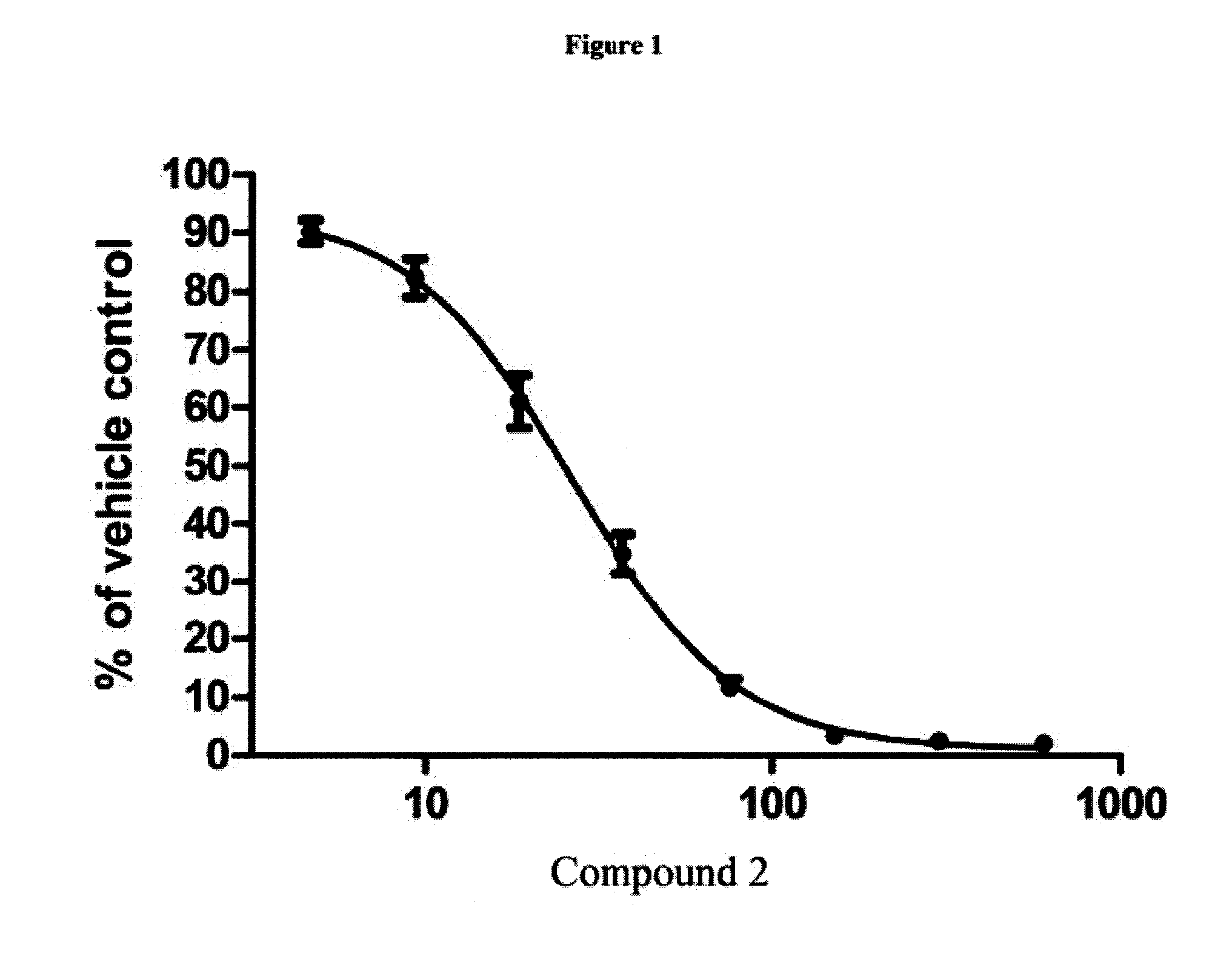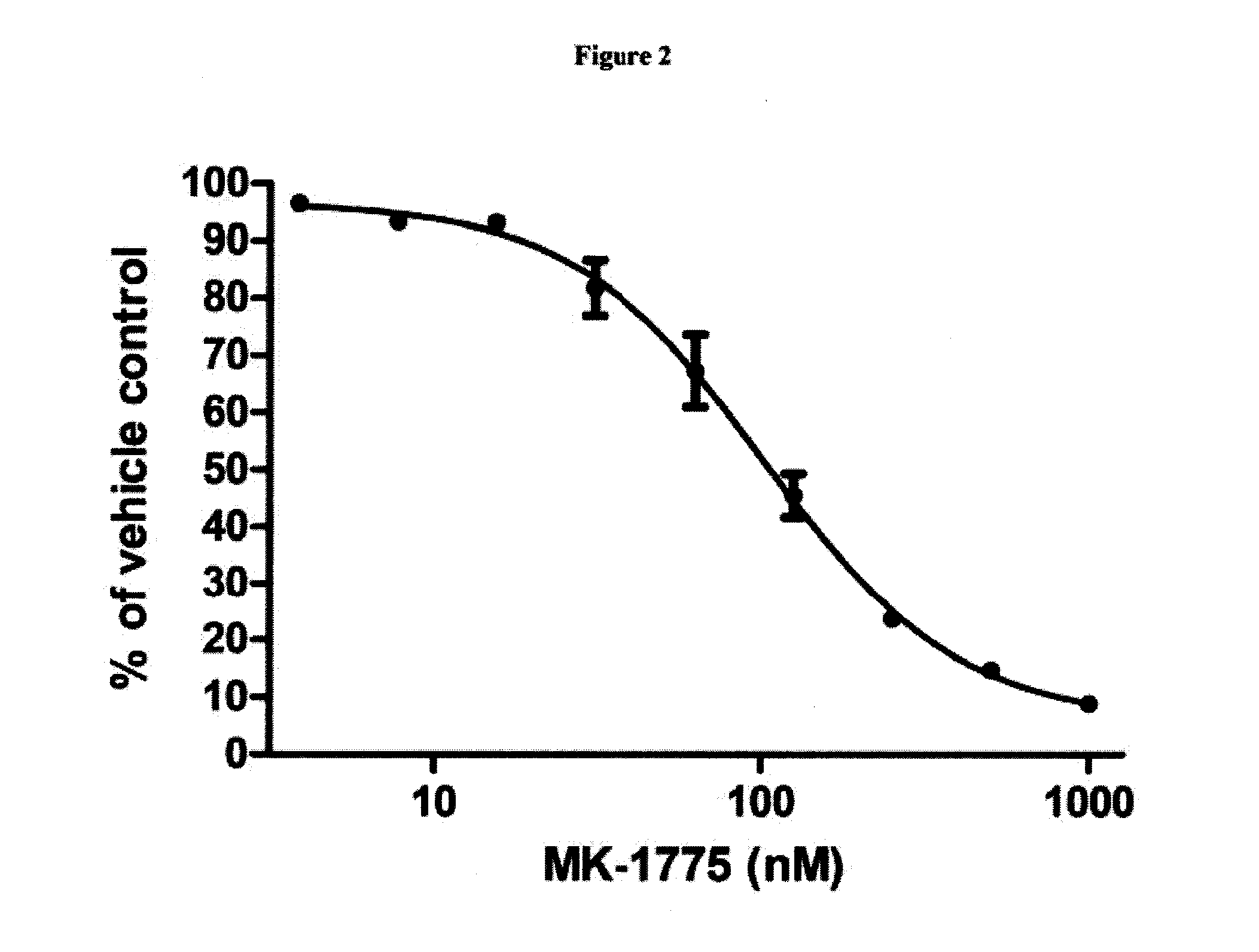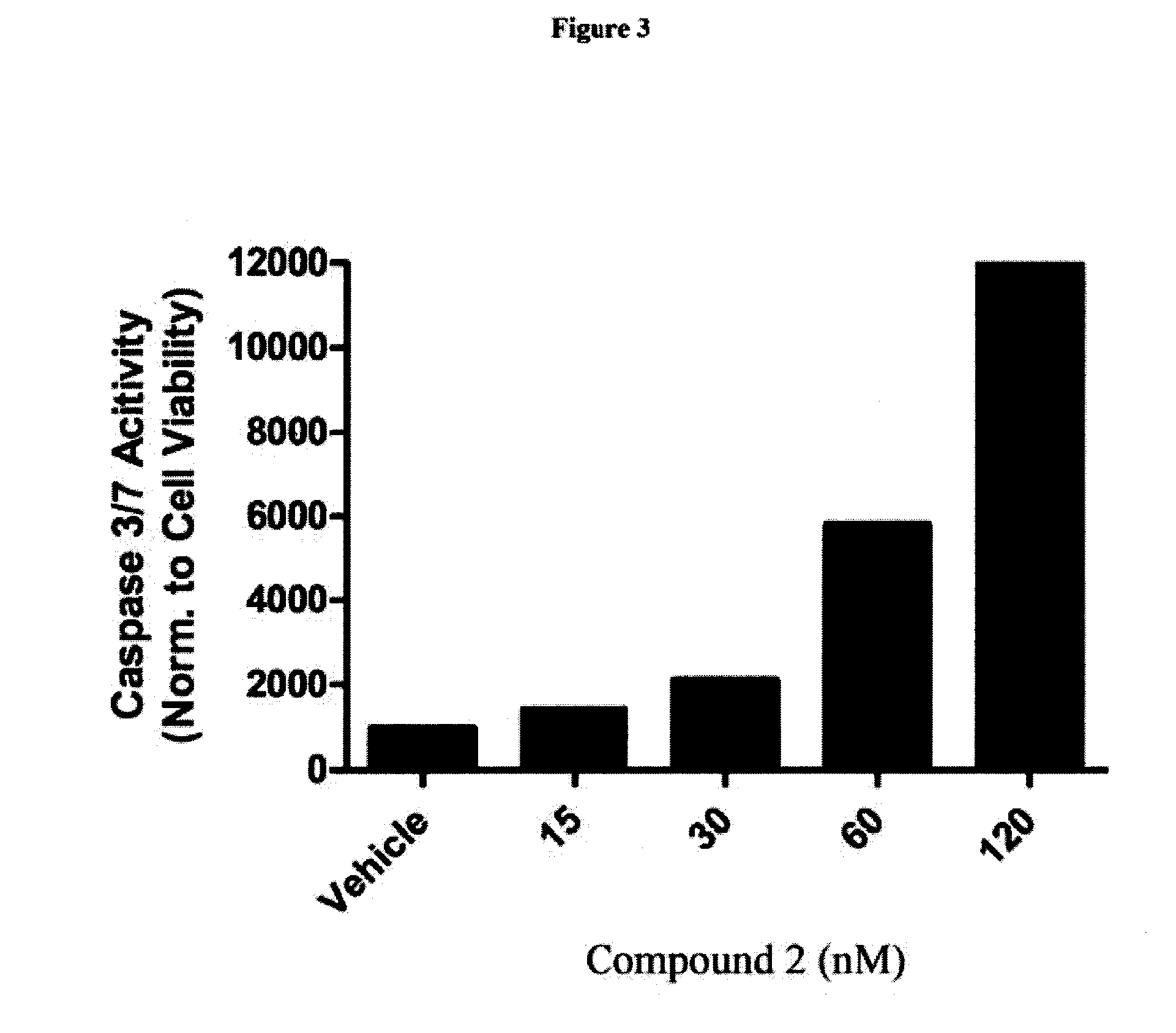Combination of checkpoint kinase i inhibitors and wee i kinase inhibitors
a technology of checkpoint kinase and wee i, which is applied in the direction of heterocyclic compound active ingredients, drug compositions, biocide, etc., can solve the problems of increasing tumor cell death, increasing the risk of dna-damaging agents, and affecting dna repair
- Summary
- Abstract
- Description
- Claims
- Application Information
AI Technical Summary
Benefits of technology
Problems solved by technology
Method used
Image
Examples
example 1
siRNAs to Wee1 Enhance the Anti-Proliferative Activity of a Chk1 Inhibitor
[0128]A synthetic lethality screen using siRNAs to 197 genes (3 siRNAs per gene) was performed in PC3, LNCaP (2 independent experiments), and A549 cell lines. Cells were reverse transfected with the siRNAs in 96-well plates, treated with Compound 2 or vehicle one day later, and then analyzed by CellTiter Blue viability assay three days after treatment. Data shown are the results obtained with the 3 siRNAs to WEE1 kinase (labeled A, B and C). Values represent percent of control with control being the median of all values for each individual plate.
PC3LNCaP (1)LNCaP (2)A549siRNA−Cpd2+Cpd2−Cpd2+Cpd2−Cpd2+Cpd2−Cpd2+Cpd2A8236989164558852B9888103100948413271C10675854870646445
example 2
Chk1 Inhibition and Wee1 Inhibition Combine to Inhibit Cellular Proliferation
[0129]HEL92.1.7 cells were plated in 96-well plates and then treated with Compound 2 or MK-1775 as single agents. After three days of treatment, cellular viability was assessed by CellTiter Blue assay (Promega). Data represent the mean±S.E. (n=5 for Compound 2, n=2 for MK-1775). IC50s were 30 nM for Compound 2, and 103 nM for MK-1775. See FIGS. 1 and 2. HEL92.1.7 cells were plated in 96-well plates and then treated with combinations of Compound 2 and MK-1775 in matrix fashion at the indicated concentrations. Three days after treatment cellular viability was assessed by CellTiter Blue assay. The reported value for each combination represents the combination index (actual readout divided by what would be expected if the compounds were additive; the expected values are the fractional effects of the single agents multiplied by each other, for example, if each single agent inhibited growth by 50%, then the expec...
example 3
Chk1 Inhibition and Wee1Inhibition Combine to Induce Apoptosis
[0130]HEL92.1.7 cells were plated in duplicate 96-well plates and then treated with Compound 2 or MK-1775. After 2 days of treatment, one plate was analyzed by Caspase-Glo 3 / 7 assay (Promega), and the other by CellTiter Blue assay. The readout from the Caspase-Glo 3 / 7 assay was divided by the readout from the CellTiter Blue assay, so that caspase activity could be normalized to an approximation of cell number. Graphs representing caspase 3 / 7 activation by Compound 2 and MK-1775 single agent treatments (see FIGS. 3 and 4). Compound 2 and MK-1775 were combined in matrix fashion. Values represent the actual values divided by what would be expected if the compounds acted in an additive fashion (the expected values are the fractional effects of the single agents multiplied by each other).
MK-1775 (nM)10005002501256331168Cpd 21201.21.51.92.22.71.91.91.3(nM)601.82.33.44.64.02.61.61.3301.72.03.95.34.73.12.21.5151.41.82.44.13.82.01...
PUM
| Property | Measurement | Unit |
|---|---|---|
| Temperature | aaaaa | aaaaa |
| Molar density | aaaaa | aaaaa |
| Molar density | aaaaa | aaaaa |
Abstract
Description
Claims
Application Information
 Login to View More
Login to View More - R&D
- Intellectual Property
- Life Sciences
- Materials
- Tech Scout
- Unparalleled Data Quality
- Higher Quality Content
- 60% Fewer Hallucinations
Browse by: Latest US Patents, China's latest patents, Technical Efficacy Thesaurus, Application Domain, Technology Topic, Popular Technical Reports.
© 2025 PatSnap. All rights reserved.Legal|Privacy policy|Modern Slavery Act Transparency Statement|Sitemap|About US| Contact US: help@patsnap.com



